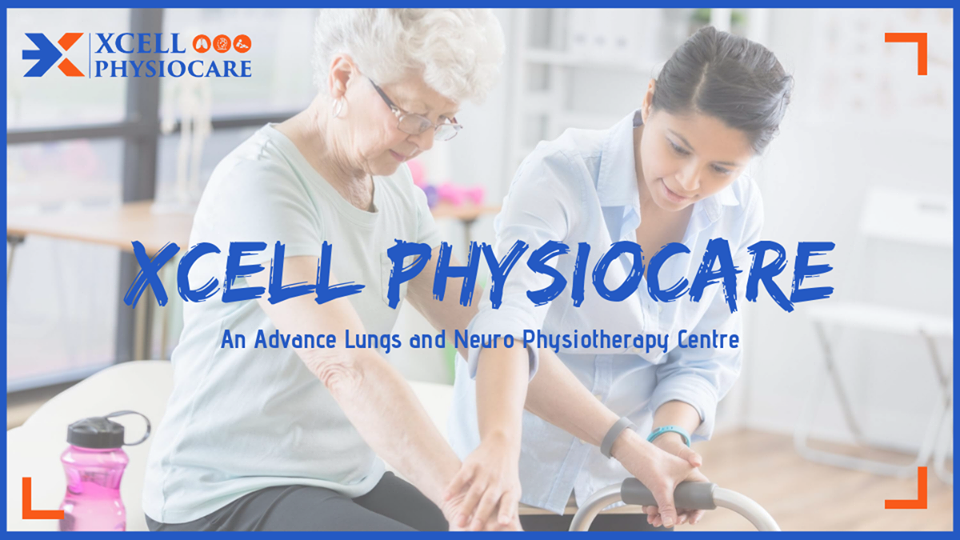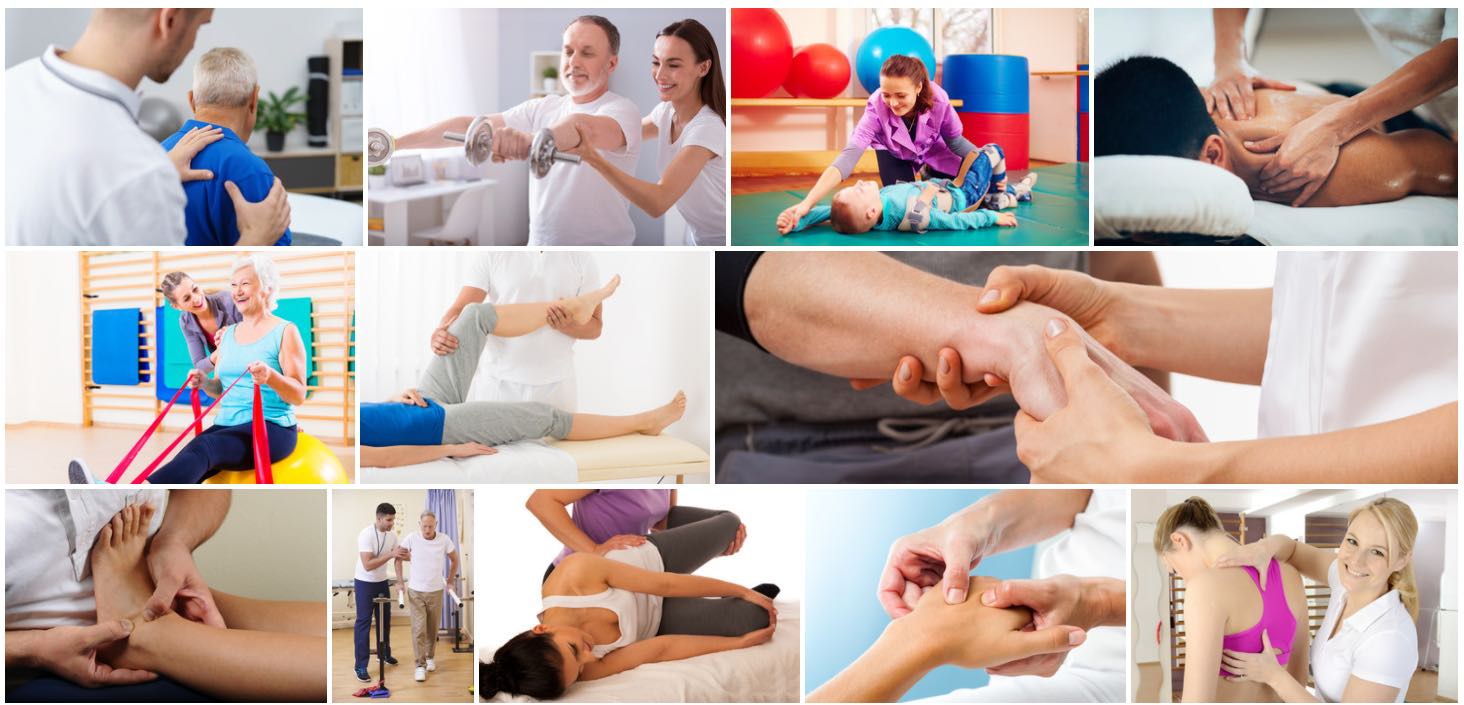Physiotherapy has evolved a lot since its beginning era. Earlier it was a part of rehabilitation with merely two broad sector, namely electrotherapy and exercise therapy. However, with time there have been many other sectors of interest in the field of physiotherapy which is growing very fast and are very effective for human health.

Advance Physiotherapy

Advanced Physiotherapy
How it Benefits:
It uses physical approaches to promote, maintain and restore physical, psychological and social well-being, taking into account variations in health status. It is science-based, committed to extending, applying, evaluating and reviewing the evidence that underpins and informs its practice and delivery. The exercise of clinical judgement and informed interpretation is at its core.
I. Latest Physiotherapy Approaches:
I. Kinesio Taping
The Kinesio Taping Method is used to re-educate the neuromuscular system, reduce pain and inflammation, optimize performance, prevent injury and promote good circulation and healing.
II. Dry Needling
Trigger-point dry needling is an invasive procedure aimed at mayo-fascial trigger points release.
III. Muscle energy technique
Muscle Energy Technique (MET) is a form of a manual therapy which uses a muscle’s own energy in the form of gentle isometric contractions to relax the muscles via autogenic or reciprocal inhibition, and lengthen the muscle.
IV. IASTM (instrument Assisted Soft Tissue Mobilization)
Instrument Assisted Soft Tissue Mobilisation or Simply IASTM is a new range of tool which enables clinicians to efficiently locate and treat individuals diagnosed with soft tissue dysfunction.
V. Cupping Therapy
Cupping therapy is a form of alternative medicine in which a local suction is created on the skin. Cupping has been characterized as a pseudoscience and its practice as quackery. There is no evidence it has any health benefits and there are some risks of harm, especially from wet cupping and fire cupping.II. Neuro Rehabilitation
Neurological rehabilitation is a specialised program designed for people with diseases, injury, or disorders of the nervous system. Neurological rehabilitation can often improve function, reduce symptoms, and improve the well-being of the patient. A neurological rehab program is designed to meet your individual needs, depending on your specific problem or disease. Active involvement of you and your family is vital to the success of the program.
How it Benefits:
Neurological rehab is to help you return to the highest level of function and independence possible, while improving your overall quality of life — physically, emotionally, and socially.
Rehabilitation programs typically consist of two parts:
(1) Skilled therapeutic exercise, to maximize function.
(2) Prescription and incorporation of specific adaptive equipment, to facilitate optimal function, mobility, and independence.
What conditions are treated in Neuro Rehabilitation?
I. Stroke Rehab
Stroke rehabilitation is to help you relearn skills you lost when a stroke affected part of your brain. Stroke rehabilitation can help you regain independence and improve your quality of life. The severity of stroke complications and each person's ability to recover vary widely. Researchers have found that people who participate in a focused stroke rehabilitation program perform better than most people who don't have stroke rehabilitation. There are many approaches to stroke rehabilitation. Your rehabilitation plan will depend on the part of the body or type of ability affected by your stroke. Physical activities might include: Motor-skill exercises, Mobility training, Constraint-induced therapy, Range-of-motion therapy, Spasticity normalisation programme, Functional electrical stimulation, Virtual reality and many more.
II. Spinal Cord Injuries Rehab
Spinal cord injury (SCI) treatment and rehabilitation focuses on aggressively working with patients physically and psychologically, so that in a short period of time patients can maximize their neurological recovery and general health. Our rehab experts educate SCI patients about all aspects of their injury and care. We want patients to return home as independent and productive as possible, prepared to resume their lives.
III. Traumatic brain injury Rehab
Traumatic brain injury (TBI) is a complex injury with a broad spectrum of symptoms and disabilities. The impact on a person and his or her family can be devastating. Rehabilitation after brain injury is largely unpredictable as every injury is unique. This gives an overview of the processes and timescales for recovery and rehabilitation, explains how families can assist in the process, and details where people can receive help and support. Our goal is to help patients return home as independent and prepared for the future as possible.
IV. Vestibular Rehabilitation
Vestibular rehabilitation is an exercise-based program, designed by a specialty-trained vestibular physical therapist, to improve balance and reduce problems related to dizziness. Vestibular rehabilitation is a specialized form of therapy intended to alleviate both the primary and secondary problems caused by vestibular disorders. It is an exercise-based program primarily designed to reduce vertigo and dizziness, gaze instability, and/or imbalance and falls.This program shall focus on complete care of patients with symptoms of Vertigo, due to central orperipheral causes.
V. Urinary Incontinence programs:
Urinary incontinence is a condition where there is leakage of urine at inappropriate times, due to loss of control of the bladder. When pelvic floor muscles weaken, the internal organs are not fully supported and controlling the release of urine becomes difficult and incontinence may occur. Behaviour modifications, physical therapy, exercises, lifestyle changes and medicines are typically tried first, before trying other treatments such as medical devices or surgery. Use of EMG Biofeedback for urinary incontinence in male or female patients due to neurological ornon-neurological causes is very effective.
VI. Swallowing Disorder Care:
Difficulty swallowing (dysphagia) means it takes more time and effort to move food or liquid from your mouth to your stomach. Occasional difficulty swallowing, which may occur when you eat too fast or don't chew your food well enough, usually isn't cause for concern. But persistent dysphagia may indicate a serious medical condition requiring treatment. Dysphagia can occur at any age, but it's more common in older adults. The causes of swallowing problems vary, and treatment depends on the cause.III. Geriatric Care
Geriatric physical therapy covers a wide area of issues concerning people as they go through normal adult aging but is usually focused on the older adult. There are many conditions that affect many people as they grow older and include but are not limited to the following: arthritis, osteoporosis, cancer, Alzheimer's disease, hip and joint replacement, balance disorders, incontinence, etc. Geriatric physical therapists specialize in providing therapy for such conditions in older adults.
How it Benefits:
Geriatric physical therapy covers a wide area of issues concerning people as they go through normal adult aging but is usually focused on the older adult. There are many conditions that affect many people as they grow older and include but are not limited to the following: arthritis, osteoporosis, cancer, Alzheimer's disease, hip and joint replacement, balance disorders, incontinence, etc. Geriatric physical therapists specialize in providing therapy for such conditions in older adults.
I. Fall Prevention
As you get older, physical changes and health conditions — and sometimes the medications used to treat those conditions — make falls more likely. In fact, falls are a leading cause of injury among older adults. Falls in the elderly are considered one of the most serious and expensive public health problems in terms of morbidity, mortality, and enormous costs to health and social services.
II. General fitness &Muscle strengthening Programme
Lower and Upper limb muscle training is important for improving functionality in elderly subjects. Exercise can help to prevent falls, improve balance and coordination.
